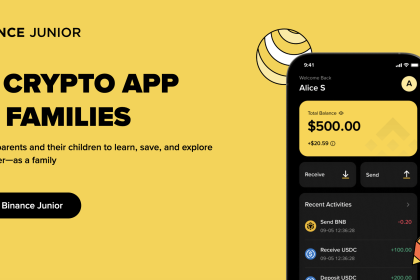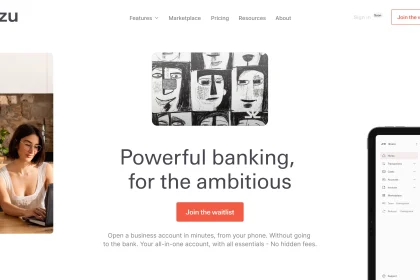The next platform will be even more immersive — an embodied internet where you’re in the experience, not just looking at it.
– Mark Zuckerberg (CEO of Meta), October 2021
In 2021, Mark Zuckerberg rebranded Facebook to Meta. It was a move to better position the trillion-dollar company for the next stage of internet development. The Metaverse, as defined by Zuckerberg however, does not exist. Not quite yet at least.
There is no single virtual platform that has the capacity to accommodate the seven billion-plus inhabitants of the planet. Instead, there are a number of virtual worlds, some of which have existed since the early 2000s and include Second Life, World of War Craft, Fortnight, and Roblox.
Virtual worlds can be accessed via virtual headsets, mobile phones, laptops, and other devices. You enter with an avatar, which is a digital representation of you and it doesn’t have to be human. In-world, you can travel, fly and teleport from place to place, meet and interact with people from all over.

You can work, own a business, earn a wage, rent and buy land, build a home, a shopping complex, decorate a garden, run events, found and run a school or university, attend meetings, conferences, and seminars, own a country club, a nature reserve, boutiques, and malls. You can get married, raise a family, pets, drive a luxury car or two; basically, be and have anything you want. The possibilities are limited only by one’s imagination and the capability of 3D artists, scriptwriters, and creators.
The use cases and upside for business is significant. In the last two years, the world has adjusted to shifts in working practices. We are all much used to attending events remotely — which has opened up our worlds.
Imagine being in Ghana and wanting to attend an event that starts in an hour in Silicon Valley, San Francisco, California. These days, all that is required is a mobile phone or a laptop, an internet connection, an invite link, 15 minutes to brew your coffee and the time to sit back and enjoy the event taking place thousands of miles away.
Granted, there are costs involved, such as the cost of the laptop and internet connection, but overall, these are far lower than the cost of flights, land transport, hotels, food and beverage, travel time, the long trip back, jet lag and carbon credits. The world is ready to embrace online.
Besides the benefits outlined above, the costs associated with setting up in the Metaverse is next to nothing, compared to erecting a presence in the physical world. You can design incredible shop fronts and premises as representations of your business and deploy 24-hour customer support service bots powered by Artificial Intelligence (AI) to serve visiting customers all year round.
Imagine you have a hotel. You could build a replica that people could enter, walkthrough and fall in love with the interiors and facilities. You could present a menu of services including reservations for rooms, restaurants and event spaces that visitors could experience virtually and book in real life. You could host live events and concerts and even allow members of the public to visit the front desk to talk to staff in real time. Imagine if wedding planners could use the digital twin of your establishment to simulate and showcase event experiences they wish to create for clients. I can’t imagine a more effective way to showcase future value at a fraction of the price it would take in real life. It’s a win-win.
Hotels that retail merchandise could create digital replicas or digital twins of products to showcase and present for sale. Starwood hotels for example, have a home range that visitors can experience during stays at their hotels and then purchase to take home. These can be displayed in-world for visitors to see, experience and purchase to be delivered and owned as non-fungible tokens (NFTs) in the Metaverse.
Businesses could go one step further and create end-to-end phygital (the intersection of physical and digital) experiences which allow customers who have purchased NFTs to have them delivered as real-world items to their homes or to an address of their choice.
Retailers of physical goods and e-commerce businesses equally stand to gain from operating in the Metaverse. Cost of goods (COGs) have always been a challenge for businesses trying to manage profitability. Operating in the Metaverse allows businesses to better manage costs by incurring COGs just once at the start. Once created, an item can be sold over and over again without having to incur further costs to acquire.
Customer services would also be improved because all transactions occurring on the blockchain are publicly available and can be queried for verification, so there are no issues with lost receipts, proof of purchase, and ownership.
The real pull with the Metaverse and Web 3 is, they form the foundations of future economies and allow business and brands to reap incredible rewards such as global brand salience, operational cost reductions, optimised targeting for marketing purposes and customer relationship management. Essentially, you will be entering a global marketplace and positioning your virtual business as your global calling card or shop front; a place to be discovered by a global audience; a place to showcase your brand, its people, its values, facilities and services.
NFTs are an interesting part of the Metaverse. 2021 was the year of the NFT and it is now a billion-dollar industry.
What is an NFT?
Most people would have heard about NFTs in the context of art and culture. I will delve into the form and function of NFTs in future issues. For now, what is important to note is NFTs or Niftys are essentially a digital representation of an item of value that is unique or scarce in nature and not interchangeable. They primarily serve as proof of ownership with rights to transfer. At times, the digital twin represented by the NFT can be worth more than the real-world item. Meta watches is one such collection of NFTs that are rumoured to be worth more than some models of Rolex.

Anyone well-acquainted with the world of NFTs will be familiar with what have fast become bluechip projects. The Bored Ape Yacht Club (BAYC) NFTs initially minting at $200 each in April 2021 and now trade at a minimum of circa 130 ETH ($387K). The Moonbirds by the PROOF Collective and Kevin Rose launched last weekend at 2.5 ETH ($7.4K) via an oversubscribed Dutch auction and are now exchanging hands at a floor of circa 31.50 ETH ($94K) at time of writing. That is an incredible 1260% ROI in just 7 days. Not to mention the incredible networking opportunities.
There is clearly something quite magical about April!
Effectively, your virtual business could offer NFTs as tokens that grant visitors elevated access, rights, and privileges to membership and loyalty schemes. The trading volume of NFTs is at all-time highs and each time an asset changes hands, royalties are generated for the project owner, essentially your business in perpetuity.
The Metaverse is just the tip of the iceberg in terms of the way in which travel and tourism businesses can transform their fortunes. I will be exploring more in upcoming articles.
Stay tuned.










